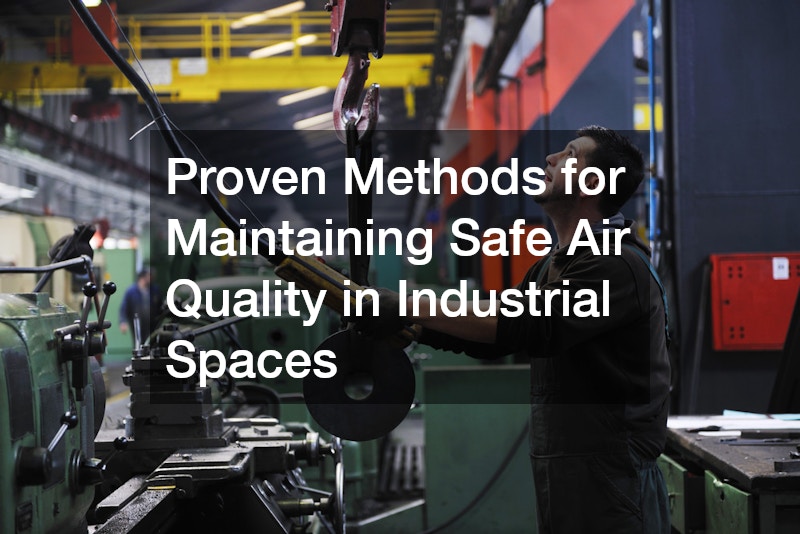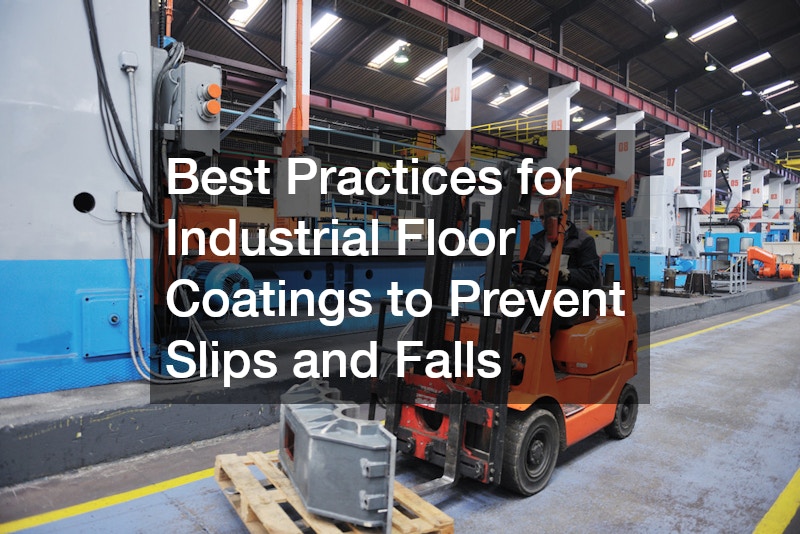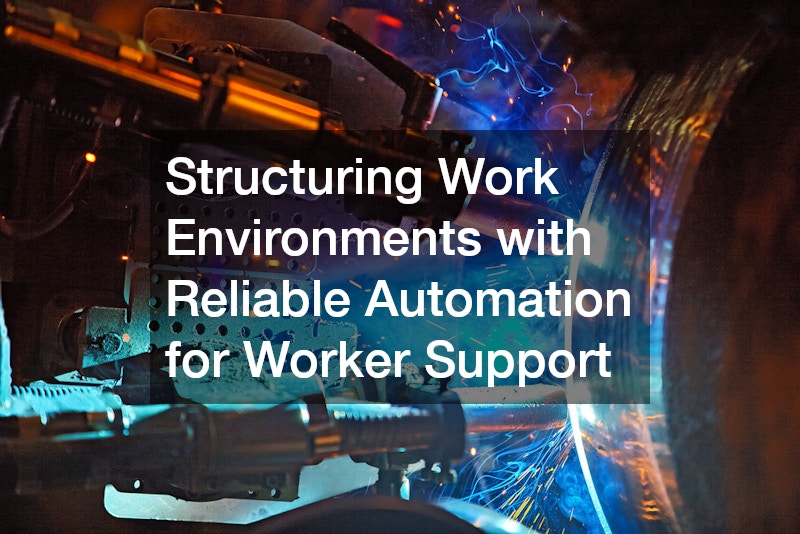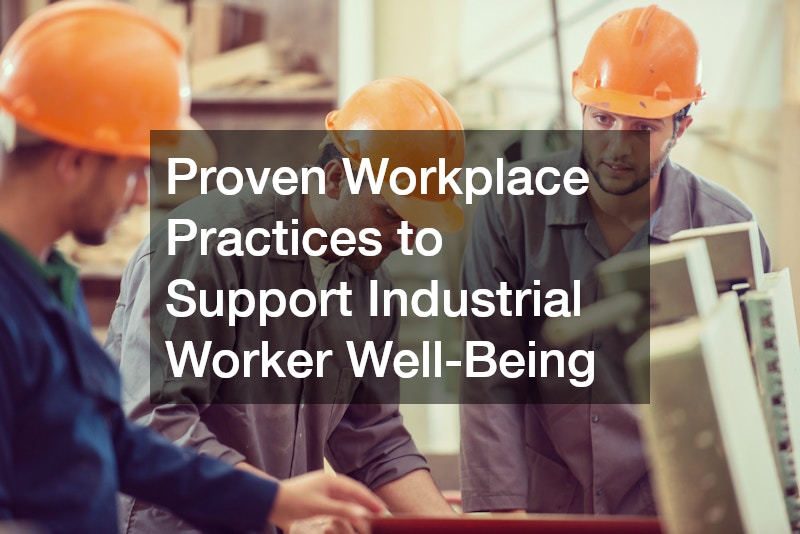Ensuring the safety and health of employees in industrial settings is a paramount concern. The implementation of effective workplace practices can mitigate risks associated with heavy equipment usage, hazardous materials, and ergonomic challenges. This article will delve into proven strategies to enhance worker safety through various aspects including machinery maintenance, lifting techniques, air quality management, and more.
- Implementing Proven Safety Protocols for Heavy Equipment Operation
- Enhancing Worker Safety with Consistent Machinery Maintenance Practices
- Using Proper Lifting Techniques and Equipment for Injury Prevention
- Proven Methods for Maintaining Safe Air Quality in Industrial Spaces
- Standardized Safety Practices for Handling Heavy Metals and Fabrication
- Best Practices for Industrial Floor Coatings to Prevent Slips and Falls
- Structuring Work Environments with Reliable Automation for Worker Support
- Reducing Hazardous Dust and Particulates with Dry Ice Blasting Techniques
- Proven Methods to Inspect and Maintain Lifting Slings and Equipment
- Effective Industrial Painting Techniques to Improve Air Quality and Visibility
- Safe Practices for Handling and Disposing of Hazardous Materials
- Long-Lasting Floor Coatings as a Foundation for Worker Safety and Comfort
- Utilizing Crane Rental and Rigging Services for Safe, Heavy Lifting
Implementing Proven Safety Protocols for Heavy Equipment Operation
Heavy equipment operation is inherently dangerous, making structured safety protocols indispensable. Organizations must establish comprehensive training programs that educate workers on safe operational practices as well as risk recognition associated with machinery. Regular audits and updates to these protocols ensure they align with industry standards and technological advancements.
An integral part of workplace practices for heavy equipment operation is emphasizing pre-operation checks. Operators should meticulously inspect machinery before use, focusing on safety features like emergency stops and warning indicators. Additionally, promoting a culture where workers feel comfortable reporting unsafe conditions can greatly enhance workplace safety.
Moreover, the use of visual aids and signage to remind operators of safety practices around heavy equipment is beneficial. Color-coded indicators and warning labels effectively communicate potential hazards and necessary precautions. By continuously reinforcing these protocols, organizations can foster an environment prioritizing safety over expedience.
Enhancing Worker Safety with Consistent Machinery Maintenance Practices

Regular machinery maintenance is crucial for safe equipment operation and is a foundational aspect of workplace practices. Routine inspections should include functionality assessments of components like hydraulic systems, brakes, and electrical systems to prevent unexpected breakdowns. Developing a comprehensive maintenance schedule can help in reducing machinery-related accidents.
Organizations can employ sophisticated maintenance software to track machine performance and schedule repairs, ensuring that all equipment is operating optimally. Such practices not only extend the lifespan of equipment but also enhance reliability and worker confidence. By investing in training for staff on maintenance protocols, companies can further solidify their commitment to industrial safety.
Additionally, collaborating with specialized industrial automation companies can introduce advanced monitoring solutions that predict potential failures. These high-tech solutions allow for proactive maintenance, thus reducing the likelihood of machinery malfunctions. Ultimately, through diligent care and preemptive measures, workplaces can create an atmosphere where operational safety is prioritized.
Using Proper Lifting Techniques and Equipment for Injury Prevention
In any industrial setting, improper lifting techniques are a frequent cause of workplace injuries. It’s essential to educate workers about the mechanics of safe lifting, including using the legs rather than the back to manage loads. Workshops and training sessions focused on lifting techniques should be implemented as part of regular safety training.
Moreover, the use of appropriate lifting equipment and slings is vital when moving heavy items such as bar joists or other structural components. Organizations should assess the weight loads and utilize equipment rated for those specific weights to avoid accidents. Investing in high-quality lifting slings and ensuring they are regularly inspected can significantly decrease the likelihood of injury.
Furthermore, it is crucial to provide ergonomic tools, such as dollies and cranes, to reduce the strain on workers. Utilizing crane rental services when dealing with exceptionally heavy loads can prevent injuries and simplify operations. Ultimately, fostering a culture that values safe lifting practices can lead to a more productive and safer workplace.
Proven Methods for Maintaining Safe Air Quality in Industrial Spaces

Maintaining safe air quality is a critical aspect of workplace practices that cannot be overlooked. Occupational exposure to airborne pollutants can lead to serious health issues for employees, underlining the importance of proper ventilation systems in industrial settings. Regular monitoring and maintenance of air quality systems ensure that harmful particles are effectively filtered out.
Effective strategies include the incorporation of commercial dry ice blasting services to minimize dust and particulate matter in the air. This environmentally friendly technique not only improves air quality but also enhances visibility within the workspace. Likewise, in the oil and gas industry, maintaining well integrity is crucial for preventing gas leaks and harmful emissions. Proper well maintenance can significantly reduce the risk of these pollutants being released into the air. Oil & Gas Wireline Specialists play a vital role in this process by providing essential services such as well logging, downhole tool deployment, and pressure testing, which can help detect issues like leaks or equipment failures. All of these help to prevent dangerous leaks and safeguard air quality. Moreover, ensuring that proper personal protective equipment (PPE) is available for employees further supports air quality standards.
Organizations should also invest in training and resources to raise awareness about air quality, including how to recognize potential hazards. Providing workers with real-time data regarding air quality can empower them to take proactive steps when necessary. Establishing a culture of safety concerning air quality can lead to long-term health benefits and increased productivity.
Standardized Safety Practices for Handling Heavy Metals and Fabrication
When working with heavy metals and fabrication processes like local metal rolling, casting, die-cutting, and more, rigorous safety practices must be standardized across the board. These practices should address not only personal protective equipment but also appropriate training regarding handling procedures. Regular training sessions and refreshers can equip workers with the knowledge needed to manage these materials safely.
Furthermore, effective waste disposal procedures are crucial in minimizing the impact of heavy metal exposure. Clearly defined protocols for the safe disposal of hazardous materials ensure compliance with environmental regulations and protect worker health. By utilizing specialized services for oil tank service and other hazardous waste, companies can streamline their processes while ensuring safety.
Additionally, developing a detailed emergency response plan for incidents involving heavy metals can provide workers with the confidence to respond effectively. Regular drilling and assessments of these procedures can enhance overall safety. Ultimately, these comprehensive approaches to handling heavy metals promote a safer work environment.
Best Practices for Industrial Floor Coatings to Prevent Slips and Falls

Slips and falls are among the most common workplace accidents, often leading to severe injuries. Implementing best practices for industrial floor coatings can significantly minimize hazards associated with wet or uneven surfaces. Choosing high-quality industrial epoxy flooring can provide a durable, slip-resistant surface that enhances safety in work areas.
Regular maintenance and inspection of flooring conditions are also essential in preventing slip hazards. Creating a routine that assesses floor integrity can help identify and address issues such as cracks or spills before they cause accidents. This commitment to flooring upkeep demonstrates a proactive approach to workplace practices focused on enhancing safety.
Moreover, educating employees about safe walking practices and encouraging them to report unsafe conditions fosters a culture of safety. Implementing clearly marked walkways and using appropriate signage can also guide workers and remind them of hazards. Prioritizing flooring safety can lead to a more efficient and injury-free work environment.
Structuring Work Environments with Reliable Automation for Worker Support

In today’s industrial landscape, the integration of automation technologies into the workplace is essential for improving safety and productivity. Reliable automation solutions can assist workers in performing repetitive and hazardous tasks without risking personal injury. By investing in systems from an industrial automation company, your team can streamline operations while enhancing safety practices.
Automation can also facilitate better ergonomics, reducing the physical strain on workers during manual operations. For instance, using automated machinery to lift heavy components allows workers to focus on quality control and oversight rather than dangerous physical lifting. This shift in tasks enhances efficiency while simultaneously improving employee safety.
Furthermore, the data collected from automated systems can provide insights into operational efficiency and worker safety. By analyzing this data, organizations can identify patterns and address potential safety issues before they escalate. Adopting automation is not just about technology; it’s about redefining workplace practices to prioritize worker safety.
Reducing Hazardous Dust and Particulates with Dry Ice Blasting Techniques
Dust and particulate matter can significantly deteriorate air quality and create unsafe work conditions. Utilizing dry ice blasting as a cleaning method can drastically reduce these hazardous substances in industrial settings. This innovative technique removes contaminants without causing secondary waste, making it an environmentally sound choice.
Implementing dry ice blasting improves visibility and cleanliness in work areas, ultimately enhancing the safety of operational practices. This method is particularly effective for equipment maintenance, allowing industrial welders and other specialized workers to operate in cleaner environments. The residual lack of dust contributes to an overall healthier workplace atmosphere.
Training staff on the benefits and proper use of dry ice blasting can further enhance workplace practices. By equipping employees with the right knowledge, they can take proactive measures to maintain a clean and safe workspace. In conclusion, integrating dry ice blasting into routine maintenance is a strategic approach to minimizing workplace hazards.
Proven Methods to Inspect and Maintain Lifting Slings and Equipment
Proper inspection and maintenance of lifting slings and equipment are crucial practices for ensuring workplace safety. Regular checks for wear and tear, cuts, and fraying in lifting slings can prevent catastrophic failures during operations. By instituting a rigorous inspection protocol, organizations can detect and address problems before they pose a risk to workers.
It’s also important to provide training for employees to recognize the signs of equipment failure and to understand when to withdraw compromised lifting equipment from service. Understanding the load capacities and safe usage of various lifting equipment is also a key part of workplace practices in industrial environments. Investing in quality lifting equipment can reduce accidents and enhance the safety of every lifting operation.
Incorporating a tagging system for inspected slings, where only compliant and verified equipment is in circulation, can streamline this process further. Such transparency ensures accountability and fosters a culture of safety and caution among workers. Ultimately, prioritizing the maintenance of lifting equipment leads to fewer accidents and a more reliable work environment.
Effective Industrial Painting Techniques to Improve Air Quality and Visibility
Industrial painting techniques have a dual purpose: to protect infrastructure and improve workplace aesthetics and safety. Utilizing high-quality, low-VOC (volatile organic compound) paints can enhance air quality while promoting a safer environment for all employees. Regular application of these coatings can prevent deterioration of equipment and structures, thereby enhancing overall safety.
Moreover, effective industrial painting services can help you improve visibility, which is essential in high-traffic areas. Using bright, durable paints to mark pathways and hazardous zones aids in visual communication of safety risks within the workplace. This increased visibility can significantly reduce the likelihood of accidents, reinforcing a commitment to workplace practices aimed at safeguarding employees.
Additionally, companies that invest in comprehensive training for their painting teams ensure that all workers understand the proper application techniques and safety measures involved. By educating crews about the importance of air quality and visibility standards, employers can enforce a culture of safety that resonates throughout the workspace. Encouraging maintenance and touch-ups as needed will keep painting practices effective for a long time.
Safe Practices for Handling and Disposing of Hazardous Materials
The handling and disposal of hazardous materials are critical components of workplace safety. Comprehensive training sessions should be conducted to educate employees on safety practices when working with hazardous substances. This includes proper storage, the use of PPE, and understanding Material Safety Data Sheets (MSDS).
Furthermore, firms should develop a clear and systematic disposal policy that aligns with local regulations. By utilizing specialized services for hazardous material disposal, organizations can ensure compliance and safety. Regular drills and assessments of emergency response plans are necessary to keep employees prepared for any incidents related to hazardous materials.
Promoting a culture of safety encourages workers to report unsafe practices related to hazardous materials. Providing accessible resources, such as safety data sheets and disposal guidelines, further emphasizes the importance of compliance. In conclusion, establishing safe practices around hazardous material handling is essential for protecting worker health and safety.
Long-Lasting Floor Coatings as a Foundation for Worker Safety and Comfort
Investing in long-lasting floor coatings is a proactive step towards enhancing workplace safety and comfort. Quality industrial epoxy floorings not only provide a slip-resistant surface but also withstand the rigorous demands of industrial environments. These coatings play a vital role in minimizing hazards caused by spills or wear and tear.
Regular maintenance of floor coatings is essential for sustaining their protective qualities. Companies should implement a maintenance schedule that includes cleaning, inspections, and timely repairs of flooring surfaces. This diligence prevents floor failures that could lead to accidents and injuries in the workplace.
Moreover, comfortable and safe flooring contributes to improved worker morale and productivity. Employees can focus on their tasks when they are confident in their environment’s safety. By prioritizing floor safety, organizations reinforce their long-term commitment to creating a conducive working atmosphere.
Utilizing Crane Rental and Rigging Services for Safe, Heavy Lifting
Heavy lifting in industrial settings can pose significant risks, and utilizing crane rental and rigging services is a smart strategy for mitigating such hazards. These services not only provide access to specialized equipment but also come with trained operators who are skilled in managing complex lifts. This expertise ensures that workplace practices related to heavy lifting are executed safely and efficiently.
Employing professional rigging services enhances the overall safety of heavy-lifting operations. These teams have the necessary knowledge to choose the appropriate lifting equipment and techniques based on the specific demands of a task. Additionally, they can conduct risk assessments to identify potential risks before lifting operations commence.
By incorporating crane rental services into operational practices, companies can maintain flexibility in their lifting capabilities without the need for long-term capital investments. This approach not only promotes safety but can also lead to considerable cost savings. Ultimately, professional support in heavy-lifting scenarios creates a workplace where safety is prioritized throughout every step of the process.
Enhancing workplace practices in industrial settings is critical for ensuring the safety and well-being of all employees. Through the implementation of proven safety protocols, maintenance practices, and proper use of equipment, organizations can create a culture of safety. Ultimately, a proactive approach to workplace safety not only benefits employees but also enhances productivity and operational efficiency across the board. By continually evolving these practices and embracing new technologies, businesses can set a high standard for safety in the workplace.


